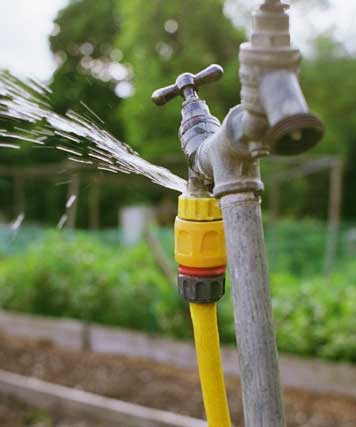Detect Concealed Water Line Leaks: Six Smart Detection Tips
Detect Concealed Water Line Leaks: Six Smart Detection Tips
Blog Article
Are you currently looking for information and facts about Top leak detection hacks?

Early detection of leaking water lines can mitigate a potential catastrophe. Apart from saving you cash, it will decrease the aggravation as well as frustration. The moment you locate a leakage, calling your plumber for repair work is the most effective solution. Some little water leaks may not be noticeable. If you can not detect it with your naked eyes, below are some hacks that assist.
1. Check Out the Water Meter
Checking it is a surefire way that helps you uncover leakages. If it relocates, that suggests a fast-moving leak. This means you may have a sluggish leak that can also be below ground.
2. Inspect Water Consumption
If you detect abrupt adjustments, regardless of your usage being the same, it means that you have leakages in your plumbing system. A sudden spike in your costs suggests a fast-moving leak.
A constant boost every month, even with the very same practices, reveals you have a sluggish leakage that's likewise slowly escalating. Call a plumber to thoroughly check your residential or commercial property, specifically if you really feel a cozy area on your flooring with piping beneath.
3. Do a Food Coloring Test
When it comes to water intake, 30% comes from commodes. Test to see if they are running properly. Decline specks of food shade in the storage tank and also wait 10 minutes. There's a leak in between the tank and also bowl if the shade in some way infiltrates your bowl throughout that time without flushing.
4. Asses Exterior Lines
Don't neglect to inspect your exterior water lines as well. Needs to water seep out of the connection, you have a loosened rubber gasket. One small leak can lose tons of water and spike your water expense.
5. Assess the circumstance as well as check
House owners ought to make it a practice to examine under the sink counters as well as also inside cabinets for any kind of bad odor or mold and mildew growth. These 2 red flags indicate a leakage so timely interest is called for. Doing regular assessments, even bi-annually, can save you from a major problem.
If you know your residence is currently old, keep a watchful eye on your heating units, hose pipes, pipelines and so on. Look for discolorations and also damaging as many appliances as well as pipes have a life expectancy. They will certainly additionally naturally wear away due to damage. Do not wait for it to intensify if you suspect leaking water lines in your plumbing system. Call a specialist plumber immediately so you do not wind up with a horrible mess in your home.
Early detection of dripping water lines can mitigate a possible catastrophe. Some tiny water leakages may not be noticeable. Checking it is a proven method that helps you uncover leakages. One small leakage can lose loads of water and also surge your water costs.
If you presume leaking water lines in your plumbing system, do not wait for it to escalate.
WARNING SIGNS OF WATER LEAKAGE BEHIND THE WALL
PERSISTENT MUSTY ODORS
As water slowly drips from a leaky pipe inside the wall, flooring and sheetrock stay damp and develop an odor similar to wet cardboard. It generates a musty smell that can help you find hidden leaks.
MOLD IN UNUSUAL AREAS
Mold usually grows in wet areas like kitchens, baths and laundry rooms. If you spot the stuff on walls or baseboards in other rooms of the house, it’s a good indicator of undetected water leaks.
STAINS THAT GROW
When mold thrives around a leaky pipe, it sometimes takes hold on the inside surface of the affected wall. A growing stain on otherwise clean sheetrock is often your sign of a hidden plumbing problem.
PEELING OR BUBBLING WALLPAPER / PAINT
This clue is easy to miss in rooms that don’t get much use. When you see wallpaper separating along seams or paint bubbling or flaking off the wall, blame sheetrock that stays wet because of an undetected leak.
BUCKLED CEILINGS AND STAINED FLOORS
If ceilings or floors in bathrooms, kitchens or laundry areas develop structural problems, don’t rule out constant damp inside the walls. Wet sheetrock can affect adjacent framing, flooring and ceilings.
https://www.servicemasterbyzaba.com/blog/how-to-detect-water-leakage-in-walls/

I'm very focused on Leaking water lines and I am praying you liked the blog posting. If you please take the opportunity to share this page if you enjoyed reading it. Thank you for going through it.
Issue? Dial fast! Report this page